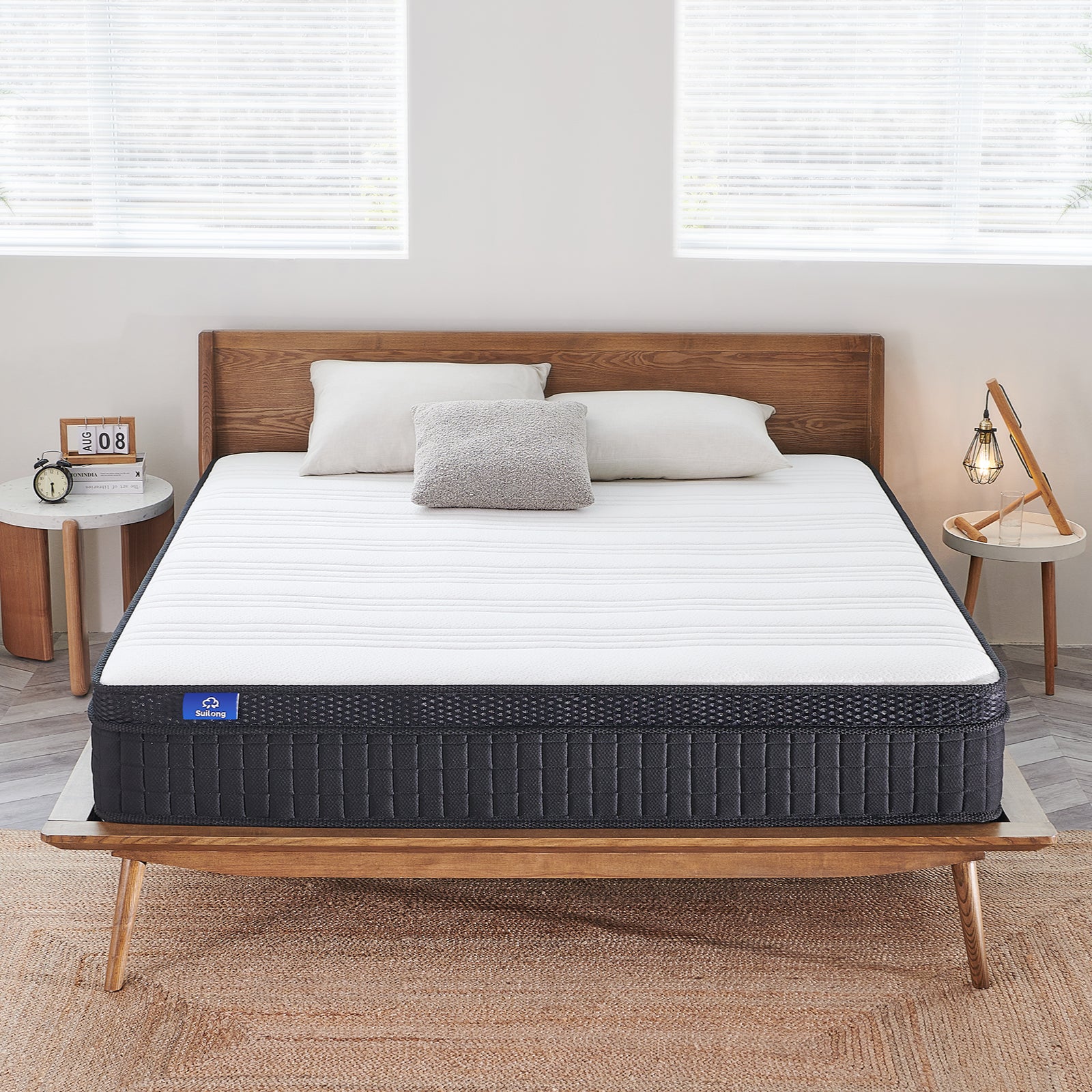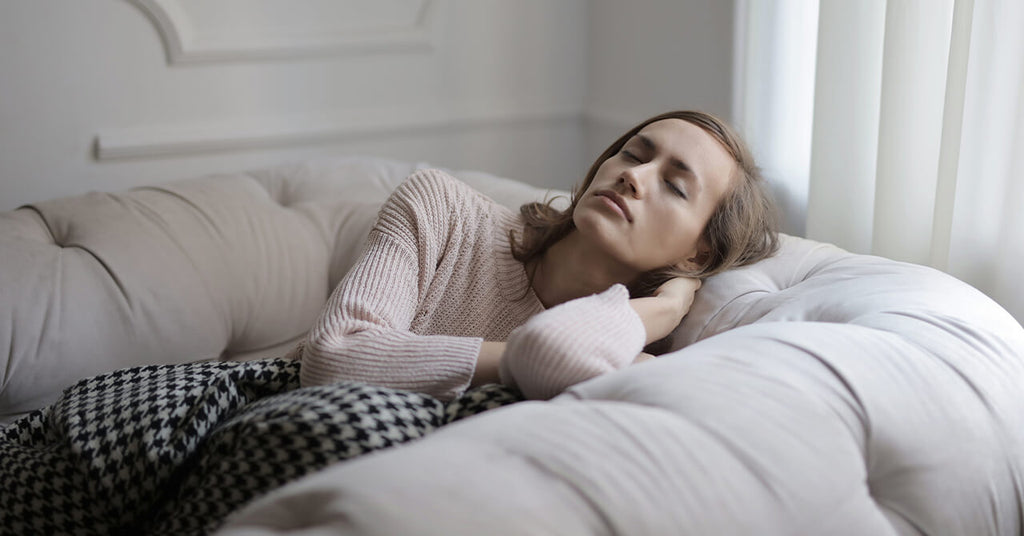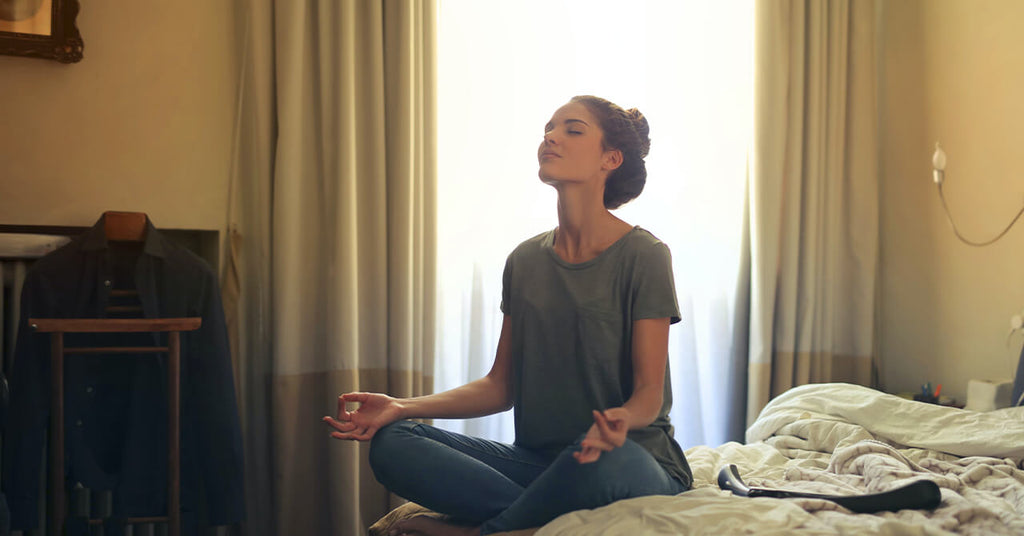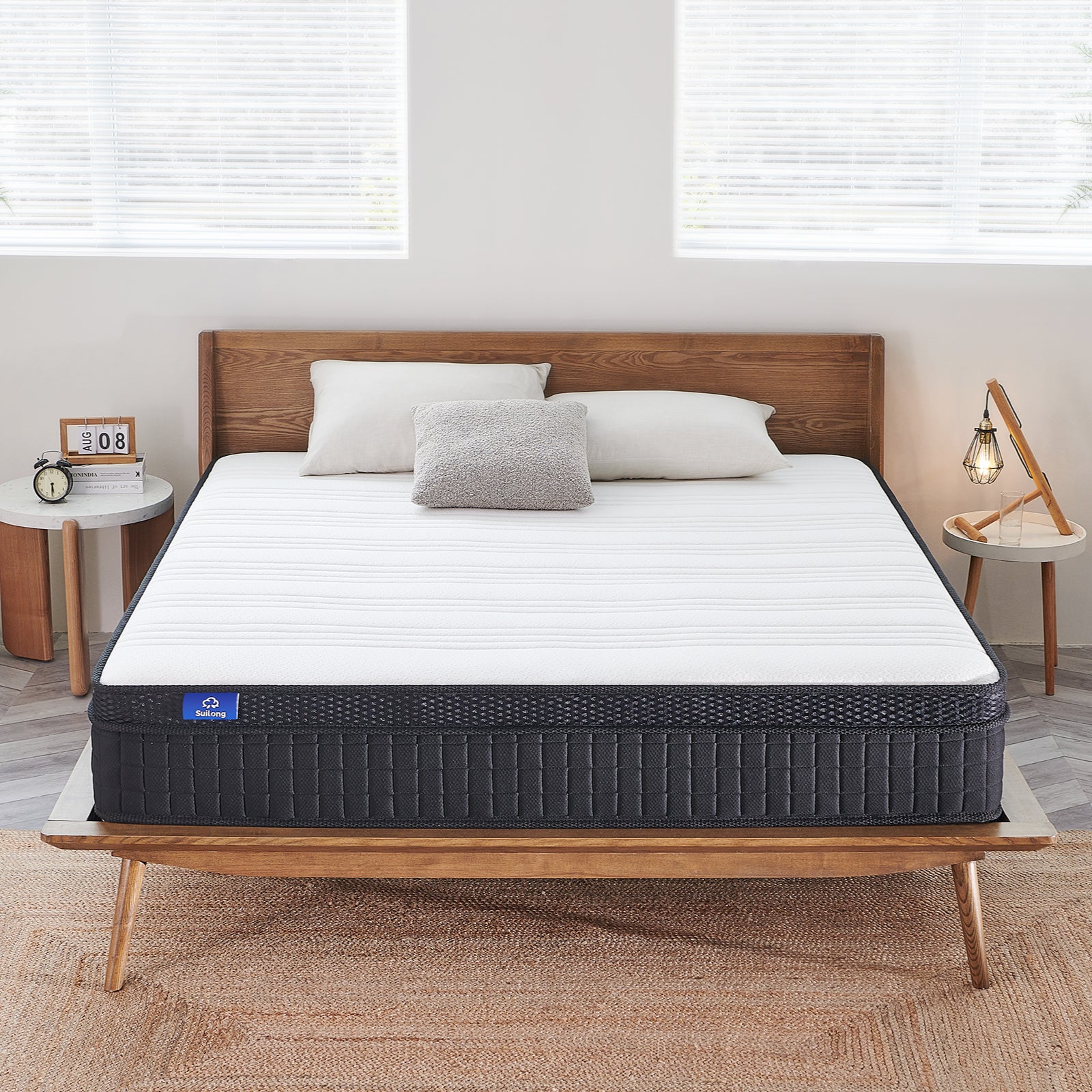Best Sleeping Position For Breathing Problems

Explore the crucial link between sleeping positions and breathing difficulties! Discover how the right posture can ease breathing and improve sleep quality.
1. Connection between sleep position and breathing difficulties
When my head is resting on the bed at night, I often feel breathless, as if there is an invisible pressure that makes every breath difficult. At this point, the best sleeping position becomes especially important, which can effectively relieve breathing difficulties and make every night enjoy a restful and comfortable sleep.
The interaction between sleep and breathing difficulties
- Dyspnea affects the quality of sleep: For me, dyspnea not only affects the speed of falling asleep, but also makes the quality of sleep greatly reduced. Whenever I have trouble breathing, I feel extremely uncomfortable and anxious, which leads to a difficult night's sleep.
- Sleeping position affects breathing: At the same time, I found that different sleeping positions have a direct impact on breathing. Certain positions may compress the airway and make breathing more difficult, while the right sleeping position can open up the airway and reduce breathing difficulties.
The importance of choosing the right sleeping position
- Relieve breathing difficulties: the correct sleeping position can effectively relieve breathing difficulties. For example, lying on the back can reduce the pressure on the airway, and lying on the side can reduce the possibility of nasal obstruction.
- Improve the quality of sleep: when breathing freely, the body can get a full supply of oxygen, which can not only prompt me to enter deep sleep faster, but also improve the overall quality of sleep.
- The prevention of respiratory diseases: long-term to maintain the correct sleeping position, can also reduce the risk of respiratory diseases. For example, prone lying tends to lead to pressure on the airway, which may trigger or aggravate respiratory diseases in the long run.
2. Common causes of dyspnea
Common symptoms of dyspnea
Dyspnea is a common problem that most people experience. It can occur for a variety of reasons, including some common diseases and symptoms. Understanding the reasons behind it is essential to finding an effective solution.
Chronic Obstructive Pulmonary Disease (COPD)
Symptoms and Effects:
- COPD often causes obstruction of the airways, making breathing difficult. This symptom may worsen at night and severely affect the quality of sleep.
Sleep Improvement Suggestions:
- Use pillows to elevate your head to reduce the risk of airway obstruction.
- Avoid smoke and irritating odors in the bedroom to create a fresh breathing environment.
Asthma
Symptoms and effects:
- Asthmatics have highly sensitive airways that are susceptible to a variety of irritations leading to flare-ups, which can cause breathing difficulties.
Sleep Improvement Suggestions:
- Use allergen-protected bedding to minimize irritation.
- Maintain indoor humidity in the right range to avoid overly dry air.
Heart Disease
Symptoms and Effects:
- Heart disease may cause the heart to be unable to deliver oxygen efficiently, which can cause difficulty breathing, especially at night.
Sleep Improvement Suggestions:
- When lying in bed, try elevating your upper body with multiple pillows to reduce the pressure on your heart.
Sleep Apnea
Symptoms & Effects:
- Sleep apnea causes the sufferer to stop breathing briefly many times during sleep and often feels exhausted in the morning.
Sleep Improvement Recommendations:
- Consider using a Continuous Positive Airway Pressure (CPAP) device, which keeps your airway open while you sleep.
- Sleeping on your side may also reduce the incidence of apnea.
3. Sleeping positions for different symptoms of dyspnea
Sleeping positions for COPD patients
- Semi-sitting position: People with COPD need to relieve pressure on the airway. Semi-sitting can help maintain an open airway and reduce breathing difficulties.
- Use multiple pillows: Placing several pillows under the head can elevate the upper body and help improve breathing.
- Avoid prone lying: Prone lying may increase pressure on the chest and lungs, which can be detrimental to breathing.
Sleeping Positions for Asthma
- Side-lying position: Asthmatics' airways are easily compressed. Side-lying reduces pressure on the airways and helps air pass more smoothly.
- Use of asthma pillows: Pillows designed for asthma patients can reduce asthma symptoms.
Sleeping Positions for Heart Patients
- Lying on your back: Lying on your back reduces the strain on your heart and keeps blood flowing, which helps people with heart disease breathe.
- Elevated Pillow: Elevating the pillow can reduce the burden on the heart and help improve breathing.
Sleeping Positions for Sleep Apnea
- Side-lying position: Side-lying reduces the collapse of the airway and can help reduce apnea.
- Avoid lying on the back: Lying on the back may cause the tongue to fall back, blocking the airway and aggravating the symptoms of apnea.
- Use anti-snoring pillows: Anti-snoring pillows can help keep the head and neck in the right position and reduce apnea.
When choosing a suitable sleeping position, adjust it with your personal comfort and doctor's advice to achieve the best breathing effect and sleep quality.
4. Optimize the sleep environment to improve breathing
Choosing the right pillow and mattress
The sleep environment has a direct impact on the quality of sleep, and pillows and mattresses are an important part of this. To ensure smooth breathing, the following points are worth noting:
- Use the right height pillow
The right height of the pillow can maintain the natural curvature of the head and spine, helping to open the airway, thus reducing breathing difficulties.
- Choose a mattress of moderate hardness
The firmness of the mattress will affect the sleeper's posture, thus affecting breathing. Mattresses should not be too hard or too soft, and need to provide appropriate support to ensure smooth breathing.
Suilong mattresses: designed to improve breathing difficulties
Suilong Mattress understands each person's sleep needs and carefully designs a mattress that can improve breathing difficulties.
- Scientific firmness design
Suilong mattresses offer a moderate firmness that gives adequate support to the body but is not too firm, helping to keep the airways open.
- Quality material selection
The use of environmentally friendly and harmless materials reduces irritation to the respiratory system, while the selection of breathable materials helps to improve breathing.

Suilong Nimbus
12 Inch Hybrid Mattress
Look no further than the Suilong Nimbus 12-inch Hybrid Mattress.
Buy NowMaintenance of indoor air quality
Indoor air quality directly affects respiratory health. To create an environment that helps you breathe, you can take the following measures:
- Control humidity
Proper indoor humidity contributes to respiratory health. Excessive humidity can lead to the growth of mold and mites, which are harmful to the respiratory system. Therefore, maintaining proper indoor humidity is necessary.
- Purify the air
Using an air purifier removes harmful substances and allergens from indoor air, such as smoke, dust mites and pollen, which helps improve breathing difficulties.
Control humidity
Maintaining proper indoor humidity is a crucial step to improve breathing.
- Use a dehumidifier
During humid seasons, consider using a dehumidifier to reduce indoor humidity.
- Choose suitable indoor plants
Some indoor plants can regulate indoor humidity and also purify the air, making them a good assistant in improving indoor air quality.
Purify the air
Air quality directly affects breathing, the following ways can help purify indoor air.
- Open windows regularly
Open windows regularly every day to maintain air circulation and reduce the accumulation of harmful gases and germs.
- Select air purification equipment
Efficient air purification equipment can filter out particles and harmful substances in the air, creating a healthier living environment for your family.
5. Daily health advice for people with breathing difficulties
When facing breathing difficulties, apart from doctor's advice and treatment, each of us can also take some measures in our daily life to improve and prevent breathing difficulties.
Recommended Breathing Training and Exercises
- Deep Breathing Exercises
Deep breathing is the most basic breathing exercise, which can help our lungs get enough oxygen. Doing deep breathing several times a day and making it as deep and slow as possible can improve the symptoms of dyspnea.
- Yoga breathing
There are many training and control methods about breathing in yoga, such as abdominal breathing, alternate nostril breathing and so on. These breathing methods can not only improve lung capacity, but also help us to focus and relax.
- Swimming exercise
Swimming is a good exercise for the respiratory system. During swimming, you need to adapt to the underwater environment by controlling your breathing, which is very helpful for respiratory training.
Dietary Guidelines for People with Breathing Difficulties
Proper diet is also a very important part of improving breathing difficulties. We need to focus on the following points in our daily diet:
- Increase foods rich in antioxidants
Antioxidants help our body fight inflammation and improve breathing problems. Some antioxidant-rich foods include dark vegetables, fruits and nuts.
- Control fat intake
Excessive intake of fats and oils can aggravate the burden on the heart and affect breathing. Therefore, we need to control fat intake and choose healthy fats such as olive oil and fish oil.
- Maintain water balance
Adequate water intake is the key to keep the respiratory tract open. You need to drink enough water every day to avoid drying out the mucous membranes of the respiratory tract and reduce breathing difficulties.
What foods help improve breathing
- Foods rich in vitamin C
Citrus fruits, strawberries and kiwis are rich in vitamin C, which can help improve breathing difficulties and strengthen the immune system.
- Foods rich in magnesium
Magnesium relaxes the muscles of the airways and improves breathing. Common magnesium-rich foods include pumpkin seeds, almonds and spinach.
- Foods rich in Omega-3
Omega-3 reduces inflammatory reactions in the body and helps breathing. Foods rich in Omega-3 include fish oil, walnuts, and flaxseeds.
What foods should be avoided
- Foods high in salt
Foods high in salt can cause edema and aggravate breathing difficulties. We need to minimize salt intake in our daily diet.
- High fat food
High-fat foods are not only bad for the heart, but also aggravate dyspnea. We need to avoid excessive intake of animal fats and fried foods.
- Caffeinated foods and drinks
Caffeine causes constriction of the respiratory tract and aggravates dyspnea. Therefore, you need to limit the intake of caffeine-containing foods and drinks such as coffee, tea and chocolate.
6. Response to acute respiratory distress
Practical breathing techniques and relaxation methods
Deep breathing techniques
When experiencing acute dyspnea, I usually try deep breathing first. Deep breathing can help me stabilize my emotions and relieve anxiety, thus reducing dyspnea. Specifically, I will inhale slowly to fill my lungs with air and then exhale slowly. During this period, I will try to keep my breathing as smooth and deep as possible, avoiding rapid and shallow breathing.
Body relaxation methods
In addition, I will utilize body relaxation methods to improve my breathing. I usually choose a comfortable position to sit or lie down and then relax each part of my body one by one. At the beginning, I will start with my head and gradually work my way down to my feet. During the relaxation process, I will concentrate on feeling the ease and comfort of each part.
Yoga and Meditation
For me, yoga and meditation are also very effective ways to relieve acute dyspnea. Yoga poses can help me improve my breathing, while meditation can make me relax and reduce stress.
How to seek help in an emergency
Stop the current activity immediately
When I feel acute dyspnea, the first thing to do is to stop the current activity immediately. Continuing the activity will only aggravate the breathing difficulty and may lead to more serious consequences.
Use first aid equipment
If I have first aid equipment nearby, such as an oxygen cylinder or nebulizer, I will use them immediately to relieve breathing difficulties. These devices can provide immediate help and relieve breathing difficulties.
Seek professional help
During an episode of acute respiratory distress, I will immediately seek professional help by calling the emergency services. While waiting for help to arrive, I will try to remain calm, take deep breaths and try the relaxation methods mentioned above to relieve breathing difficulties. If conditions permit, I will also notify someone close to me to assist in the process.
Unlock better breathing and superior sleep by adopting the correct sleeping positions! Start tonight for a restful and rejuvenating sleep experience.
FAQs
Q: What are the best sleeping positions for individuals with chronic breathing issues?
A: The ideal sleeping positions for chronic breathing issues include sleeping on your back with a pillow elevating your head, or sleeping on your side with a pillow between your knees for support.
Q: Can certain sleeping positions alleviate shortness of breath?
A: Yes, elevating the head with pillows while sleeping on your back can alleviate shortness of breath. Side-sleeping may also aid individuals with certain respiratory problems.
Q: How does sleeping position affect individuals with sleep apnea?
A: Sleeping on the back might worsen sleep apnea in some individuals. Side-sleeping can be beneficial as it may prevent the tongue from blocking the airway, thus facilitating better breathing.
Q: What sleeping positions should be avoided for people with breathing difficulties?
A: Stomach sleeping should generally be avoided, as this position might restrict breathing and exacerbate respiratory issues. It’s crucial to consult with a healthcare provider for personalized advice.
Q: Can adjustable beds assist individuals with breathing problems during sleep?
A: Adjustable beds can be immensely helpful as they allow individuals to elevate their heads, relieving pressure on the airway and promoting easier breathing during sleep.
-
Posted in
Buyer's Guide, Lifestyle, Shopping Tips, Side Sleepers, Sleep Experts, sleep health, sleep position, Sleep Tips, sleeping positions


















